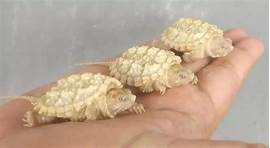Can Snapping Turtles Be Pets?
Snapping turtles are fascinating and powerful predators that have captured the attention of many people. Some individuals may consider keeping a snapping turtle as a pet, but this decision should be made carefully. This article will explore the various aspects of snapping turtle ownership, discussing the pros and cons, as well as the challenges and responsibilities involved.

Pros of Keeping a Snapping Turtle as a Pet:
1. Unique and Intriguing Appearance: Snapping turtles have a prehistoric look with their large heads, powerful jaws, and long tails. Their striking appearance can make them captivating to observe.
2. Relatively Low Maintenance: Compared to other pets, snapping turtles require relatively low maintenance. They do not need to be walked or taken outside, and their diet mainly consists of fish, worms, and pellets, which can be easily obtained.
3. Long Lifespan: Snapping turtles have long lifespans, with some species living for over 50 years in captivity. This means that they can potentially be a lifelong companion.
Cons of Keeping a Snapping Turtle as a Pet:
1. Aggressive Nature: Snapping turtles are known for their aggressive behavior. They have powerful jaws and sharp claws that they can use to inflict painful bites. Even seemingly tame turtles can suddenly become aggressive, making them unpredictable and potentially dangerous pets.
2. Specialized Housing Requirements: Snapping turtles require a specialized habitat that mimics their natural environment. This includes a large, deep aquarium or pond with a basking area, a hiding place, and clean water. Creating and maintaining a suitable habitat can be time-consuming and expensive.
3. Potential Legal Issues: In some areas, it is illegal to keep snapping turtles as pets due to their aggressive nature and potential danger to humans and other animals. It is crucial to check local regulations and obtain the necessary permits before acquiring a snapping turtle.
Challenges and Responsibilities of Owning a Snapping Turtle:
1. Handling with Care: Snapping turtles should always be handled with extreme caution. They should never be picked up by the tail or shell, as this can cause serious injury. It is important to use a secure grip and support their body to prevent them from feeling threatened and biting.
2. Providing Proper Diet: Snapping turtles have specific dietary needs, and their diet should be carefully monitored to ensure they are getting the necessary nutrients. A balanced diet typically includes a variety of live or frozen fish, worms, and commercially prepared turtle pellets.
3. Maintaining a Clean Environment: Snapping turtles can create a lot of mess, and their habitat needs to be cleaned regularly. This includes removing uneaten food, feces, and shedding skin from the water and substrate. Failure to maintain a clean environment can lead to health problems for the turtle.
Conclusion: Snapping turtles can be fascinating creatures, but they are not suitable pets for everyone. Their aggressive nature, specialized housing requirements, and potential legal issues make them challenging and potentially dangerous animals to keep. It is crucial to carefully consider the pros and cons, as well as the challenges and responsibilities involved, before deciding whether a snapping turtle is the right pet for you.
Declaration: All article resources on this website, unless otherwise specified or labeled, are collected from online resources. If the content on this website infringes on the legitimate rights and interests of the original author, you can contact this website to delete it.






